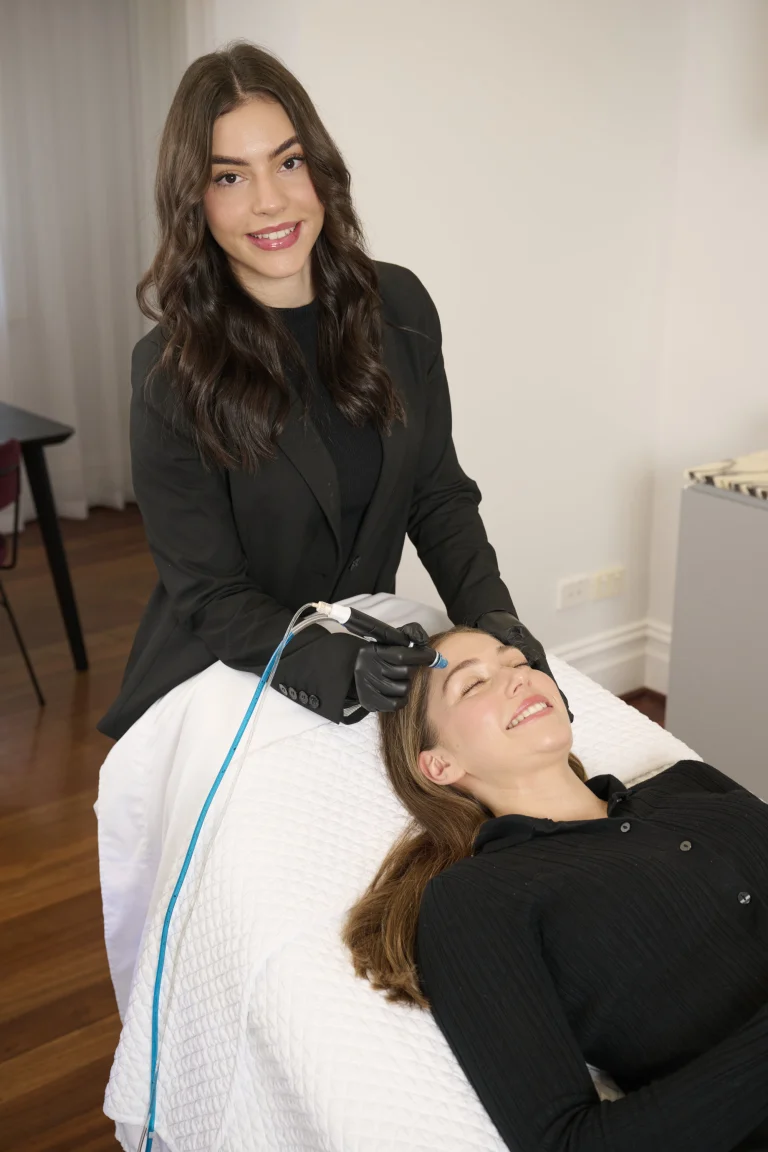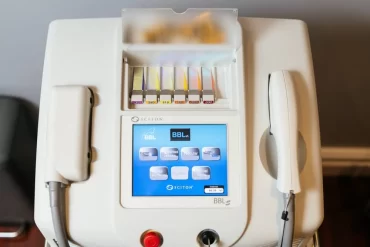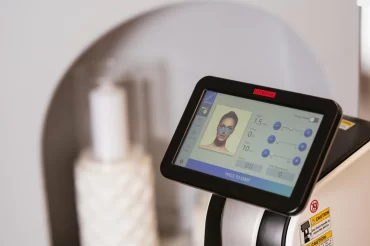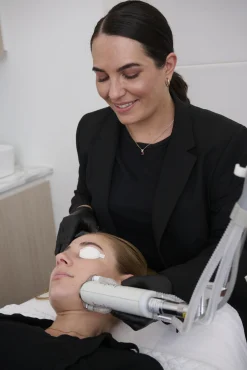Skin Sagging

One of the hallmark signs of ageing skin is a loss of skin elasticity and laxity which presents to many as “sagging skin”.
With age, the skin itself changes with a loss of collagen and support as well as a loss of elastin. Elastin provides the skin with the ability to stretch and snap back into position. When elastin is lost the skin becomes loose and slack and is unable to maintain its structure and position.
With a loss of healthy collagen and a reduction in its production results in a loss of skin strength and thickness. As a result the skin presents as thinner and less firm skin.
Combined with the actual skin changes, the physical appearance of sagging skin is also due to changes which happen below the level of the skin becoming more evident with age.
A loss of supportive structures beneath the skin results in less support. Atrophy of the fat pads, bone loss and resorption as well as cartilage loss all contribute to loss of the facial structure. The skin therefore loses its platform of support resulting in a sagging appearance.
FAQs
What causes sagging skin?
Many of these changes are intrinsic changes and occur in everyone. The changes to skin quality, especially the quality and amount of elastin and collagen, are significantly affected by the environment.
Environmental influences play the greatest role in obvious alterations to the skin in terms of texture and aesthetic quality.
The major insults are chronic exposure to UV radiation (also known as photo-ageing) and smoking. Other causes include air pollution, poor nutrition, and rapid, extensive weight loss (and also weight fluctuations over time).
One of the major causes of skin sagging, smoking, causes a loss of elastin and collagen by the production of free radicals. This is when once-healthy oxygen molecules become overactive and unstable. Free radicals damage cells, leading to, among other things, premature wrinkles and sagging.
Skin damaged by the environment appears coarse, roughened and is deeply wrinkled with a loss of elasticity and recoil, making the skin appear “saggy”.
Skin sagging generally becomes more apparent as the effects of environmental and lifestyle changes appear, usually in the 40-50s, especially for women. These environmental factors can worsen and accelerate solar elastosis, wrinkling and sagging of the skin
Skin sagging generally becomes more apparent as the effects of environmental and lifestyle changes appear, usually in the 40-50s, especially for women. These environmental factors can worsen and accelerate solar elastosis, wrinkling and sagging of the skin.
Can sagging skin be prevented?
Prevention strategies vary between individuals but the main focus of treatment is to prevent skin sagging while the skin is still healthy.
The primary prevention method is to avoid exposure to UV radiation. This includes daily use of a broad spectrum SPF 50, use of protective measures such as a hat, as well as avoidance of the sun in peak times and using shade as much as possible. Sun tanning and use of sun beds should be avoided.
Smoking is another contributor. Smoking cessation and avoidance of passive smoking is essential to maintain healthy skin and prevent further free radical damage. In addition avoidance of air pollution is important and this can vary significantly depending on where in the world you live.
The use of topical at home skin care (use of antioxidants, vitamin C, Niacinamide and Retinol) and in-clinic treatments can also be utilised while the skin is still healthy, to avoid sagging and maintain skin integrity and firmness.
The majority of these treatments utilise methods of inducing collagen and elastin production. This process involves triggering a cascade of events within the skin that stimulates new fibre formation through controlled inflammation and wound remodelling.
What treatments are available?
If skin changes have already developed, we offer professional treatment options that may be considered following a comprehensive consultation. These are tailored to the individual and will be discussed in detail with your practitioner.
Skin Tightening
Skin tightening using SkinTyte II technology and infrared heat energy is used to improve appearance of skin laxity and poor skin tone. This treatment is especially beneficial to the delicate eye skin and skin around the jawline and neck.
RF Microneedling
Utilising both Radiofrequency energy and microneedling, the skin is stimulated through a controlled wound response to encourage collagen production and cellular turnover. This is an excellent treatment for the jawline and neck.
Halo Laser
Halo laser resurfacing can repair the skin and stimulate healthy collagen production. The Halo works on both superficial and deep levels to induce collagen and elastin formation, resulting in firmer and healthier skin.
Skin Needling
Skin needling uses fine microneedles to induce a controlled inflammatory response in the skin which in turn assists in rebuilding the skin. It can be used for all areas of the face including around the eyes and mouth.
PRP
Platelet Rich Plasma uses the body’s own healing response to encourage collagen and elastin formation and improve the appearance of thinning and damaged skin.
An advanced skin rejuvenation treatment considered by some individuals seeking gradual improvements in skin hydration, texture, and elasticity.
Rather than filling or lifting specific areas, these treatments aim to restore a more balanced and refreshed appearance over time.
The treatment may improve hydration and support the natural processes that maintain skin firmness and elasticity.
In some cases, non-surgical medical procedures may be considered. This will be discussed with you during your consultation.
What are the costs?
In line with TGA guidelines, we are not able to advertise the price of our bio remodelling treatments. Upon consultation, our practitioners will be able to discuss pricing based on your individualised treatment plan.



